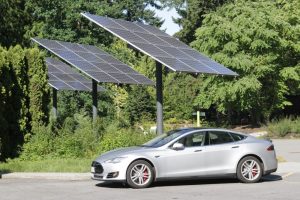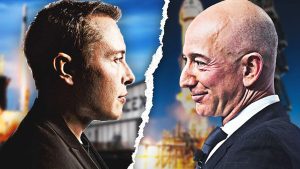If you’re a young, minority employee working in rural America, a robot will probably take your job in the not-too-distant future. This is according to a report on the consequences of automation on the American workforce published by Brookings in January. The researchers had examined data on a mix of industries, geographies, and demographic groups across the US.
The team arrived at their conclusion by combining computations on the “automation potential” of tasks in each job and industry.

The machines that gave the Rust Belt its name are still at it. And it’s the workers in smaller cities in rural America that are most at risk.
Dalton, Georgia, had the highest automation potential at 56 percent. Kokomo, Indiana, ranked second with 54 percent. The region of Lexington Park, Maryland, earned the lowest automation potential with 39.1 percent.
The team found that minorities and younger workers inordinately worked in jobs with a high number of “automatable” tasks. This was true in every state and in every city surveyed.
Contents
“The Next Phase of Automation”
Robot workers have been taking jobs away from the world’s workforce for years now. The automobile industry began replacing people along the assembly line with robots decades ago. The trend is becoming more apparent as the curves of robotics and information technology converge.
“The next phase of automation, increasingly involving AI, seems like it should be manageable in the aggregate labor market, though there are many sources of uncertainty,” says Mark Muro, lead author of the Brookings report.
Muro says the more gradual the phase of automation, the better. He is concerned the US may see an increase in the speed of automation soon if the economy takes a dive.
Here’s where things get wacky.
Like the storm Donald Trump has whipped up with his racially-charged remarks, automation has provoked paranoia, name-calling, and intemperate rejoinders. Both represent the loss of jobs. Both involve human suffering, want, and grief; and both conjure a troubling prospect
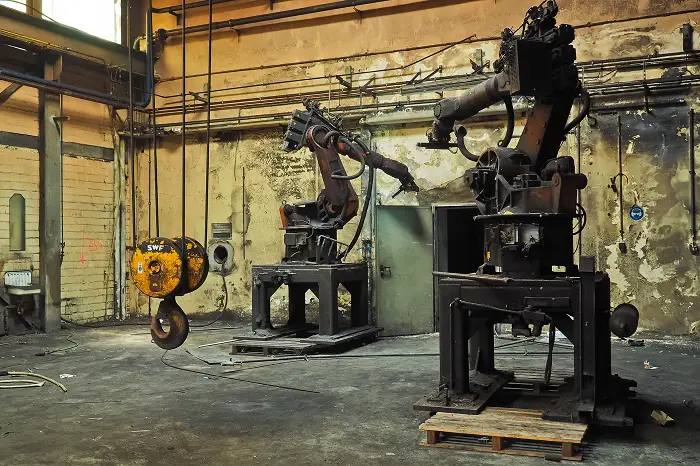
Divergences
Conservative economic wisdom says that as long as productivity is increasing, all is well. Technological innovations foster higher productivity, which leads to higher incomes and greater well-being for all. This was true for most of the 20th century.
Some say, however, the two have begun to deviate in recent decades.
Erik Brynjolfsson and Andrew McAfee, business researchers at the Massachusetts Institute of Technology, attribute the divergence to automation.
They present their argument in their book, The Second Machine Age, in which they claim automation is, in fact, destroying jobs.
Many economists disagree – and the back and forth has been lively. Casual observers meanwhile find it difficult to play arbiter for lack of data and the cacophony of conflicting views.
“Around three-quarters of Americans (76 percent) say inequality between the rich and the poor would increase if robots and computers perform most of the jobs currently being done by humans by 2050,” according to a Pew Research study.
White-Collar Robots
One cannot miss the weird, gritty techno-corporate ambitions that reverberate through the entire issue.
The forecast of a fully automated America where humans live off some Utopian public welfare program is a pipe dream. But automation is nonetheless changing the nature of work in the country – and relentlessly so.
Where is it headed and what will the future job market look like?
The old robots were big, cumbersome, clunky machines. They were blue-collar workers that required WD40 and mechanical maintenance: the equivalent of a factory worker’s coffee break.
Technological advances in artificial intelligence have introduced a new kind of working robot… smart, silent, and infinitely more capable.
These new machines are taking over white collar jobs in some places.
“The technology is going so fast now that in two or three years you can make the robot do almost anything,” Johnny Albertsen, chief executive of Rosborg Food Holding, tells the LA Times.
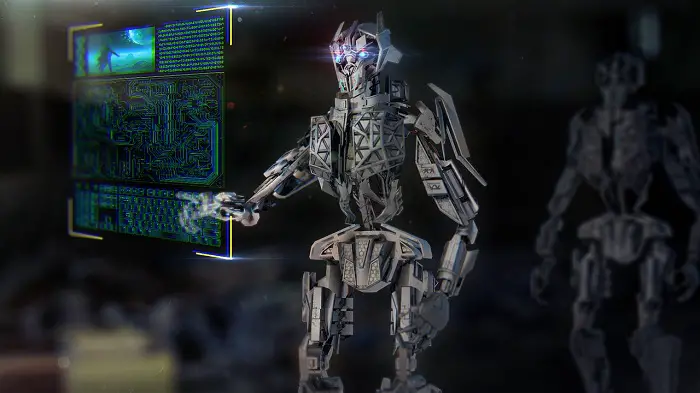
machines employ natural language processing to analyze central bank commentary and predict monetary policy,
according to Bloomberg. (Illustration: Computerizer from Pixabay)
Follow the Money
A separate report, this one sponsored by UIPath, plainly points to who is benefitting most from an automated workforce.
Researchers surveyed executives from eight different countries, including the US, UK, France, Germany and Canada. Each of the respondents worked at major companies. All of them had at least US $360 million in revenue. Half claimed to have over a billion dollars.
The results of the survey reveal a telling disparity in attitudes among C-suite executives and lower wrung workers and employees.
The study, published recently by the Economist, suggests automation is simply an executive cost-cutting and efficiency-improving strategy.
CEOs and CTOs from all over the world claim they need to automate to be more competitive. They argue automation works because it reduces the payroll, and everyone else is doing it, anyway.
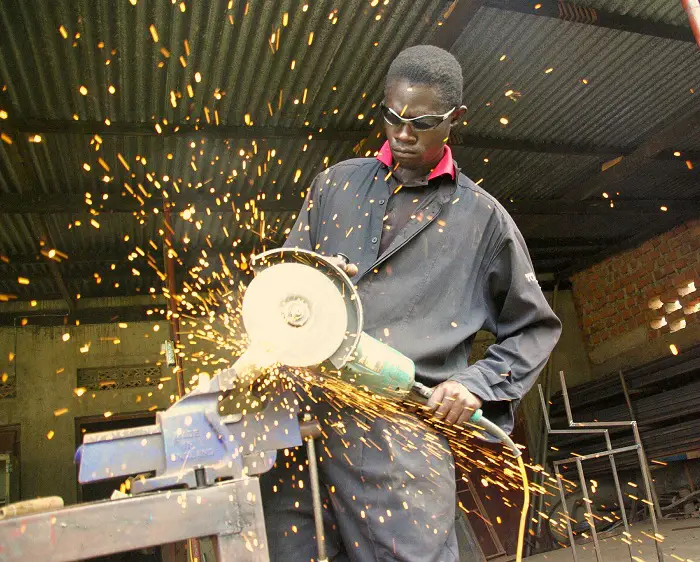
computers perform most of the jobs currently being done by humans,according to a Pew Research study.(Photo:
Brian Odwar from Pixabay)
Half of the respondents admitted to launching automation initiatives without a clear strategy.
In a way, the controversy between labor and automation runs parallel to fears of an immigrant invasion in the US.
It is about jobs and the terrifying expectation of unemployment.
For now, those driving automation appear to be in no immediate peril.
And there lies the rub.
Bill Merchant puts it bluntly in an article for Gizmondo: “Automation is a buzzword, a corporate imperative, an opportunity to cut labour costs, even when the technology isn’t there to fill the gaps yet and it is being consciously, approvingly, and eagerly adopted by our corporate overlords.”
Do you think a robot is coming to take your job?


